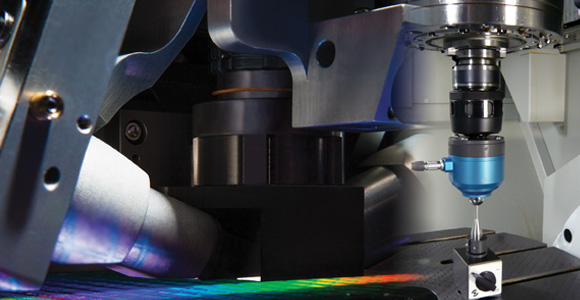This article has been reproduced from https://www.mtwmag.com/the-future-of-metrology/ ; written by Anshika Srivastava
“Measurement is the first step that leads to control and eventually to improvement. If you can’t measure something, you can’t understand it. If you can’t understand it, you can’t control it. If you can’t control it, you can’t improve it.”
– H. James Harrington
Proper knowledge of, and skills in, measurement techniques are required to properly construct engineering works and structures. Lack of knowledge and miscalculations can result in catastrophic events. Take, for example, the Great Kersten Blunder, in which software controlling a space probe on course for Venus used “24.5” instead of “25.4” to convert millimeters to inches. The error meant that the probe missed its target planet completely, losing $2 billion worth of technology. The eponymous Kersten was the programmer who made the error.
Precise and reliable measurement is the foundation of all engineering works and structures. Without it, engineering machines will break down, buildings will collapse and vehicles will crash. It assures that all gears are fitted correctly to produce a continuous motion; it ensures that structures are balanced and properly supported by its foundation and it determines the correct distance needed to travel from one place to another. Proper knowledge and skills in measurement is required to properly construct engineering works and structures.
Metrology is defined by the International Bureau of Weights and Measures (BIPM) as the science of measurement, embracing both experimental and theoretical determinations at any level of uncertainty in any field of science and technology.
Technological innovations have increased the measurable world to the molecular level. Year after year, metrology grows increasingly subtle, and metrological tools grow increasingly sensitive. And this is just the beginning.
All of this directly affects the world of quality, which relies on increasingly sophisticated measurement tools and techniques as the lifeblood of quality assurance. For manufacturing applications in particular, the ability to properly measure materials and parts leads to fewer defects and higher levels of quality and customer satisfaction.
In the future, we are likely to see significant advances in the following five key elements of metrology tools and equipment:
- Increased speed
- Improved accuracy
- Reduced measurement size
- Better environmental control
- Lower costs.
For metrology equipment manufacturers and the customers who buy from them, these are the five areas where technological advances lead to measurable results. For high-end users with the resources to afford it, the next generation of CMMs (Coordinate Measuring Machines), articulated arms, optical scanners and the like will yield astonishing increases in speed and accuracy, with a corresponding reduction in size and greater portability.
What does the future of metrology hold? To meet the anticipated industry needs, equipment manufacturers are looking for ways to optimize the functionality of measurement and inspection equipment—to measure all things in all ways —using a wide range of sensor and mechanical technologies to reduce inspection time and costs.
Multisensor technology
Any measurement system uses at least one sensor technology. A sensor collects data points from a part to perform a measurement – it’s the probe or detector that “senses” the part. Sensor technologies are contact or non-contact. Combining two or more sensors on a single machine makes it multisensory. Smaller and varying feature sizes and tighter tolerances are good incentives for manufacturers to investigate multisensor data-gathering systems that incorporate tactile, vision, and laser-scanner systems. Multisensor technology offers high level of flexibility, accuracy, speed, and throughput, in addition the ability to measure forms and features, that may be impossible for a single-sensor machine
Software
Another trend is the reuse of existing equipment through the application of new, easier-to-use software and reconstruct CMMs with advanced sensors. This retrofitting of CMMs with new sensor technology significantly help manufacturers improve throughput with the degree of accuracy necessary to provide users with meaningful dimensional data. For example, large-scale metrology, too, will get a boost as indoor GPS technology is applied to more applications.
The use of computer tomography (CT) inspection systems, particularly as applied to small components is also of significant interest in the metrology equipment industry.
Everybody wins when everybody measures
It’s been said that the only constant is change. Nowhere does this aphorism ring truer than in the metrology industry. The constant evolution of tools and concepts forced by the demands of the marketplace lead to faster and more accurate measurement options for companies and organizations. Competition between makers of metrology equipment adds more fuel to the fire, spurring further advances. Manufacturers benefit by being able to offer their customers better-produced materials, and consumers gain when those materials are turned into better, safer and affordable products.
The key is flexibility. With ever-increasing options in terms of scanning speed, accuracy, measurement size, environmental control and cost, manufacturers and others who require measurement and inspection will be able to choose a solution that’s just right for their needs. As measurement becomes ubiquitous, quality will improve. Profitability and customer satisfaction will increase. It’s simple.
By any measure, the future of metrology looks bright indeed.

Anshika Srivastava,
THORS eLearning Solutions
Anshika Srivastava is currently a blogger for THORS eLearning Solutions, an Ohio based company that provides eLearning content for the manufacturing industry. She has around 8 years of experience in digital marketing. As a part of the marketing function, she has helped companies in managing their digital footprint. Anshika is passionate about SEO, social media and web technologies. She holds a BE in Electronics and an MBA in IT & Marketing. She uses her varied experience to create refreshing content for the manufacturing audience.
.









